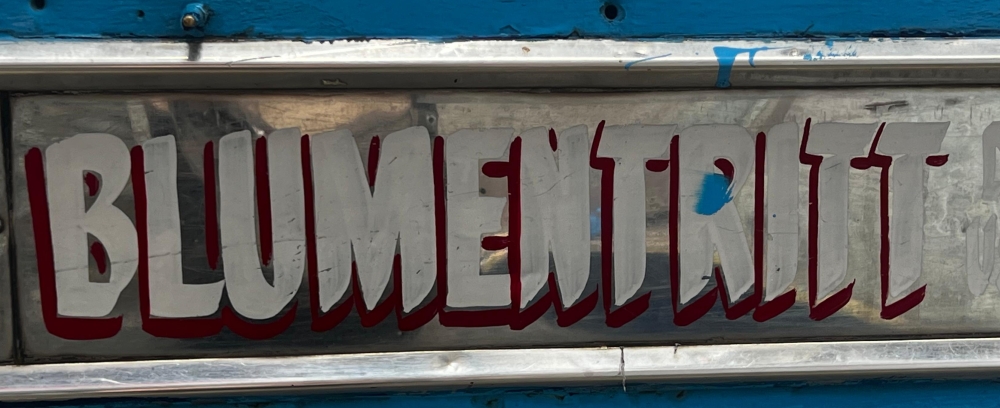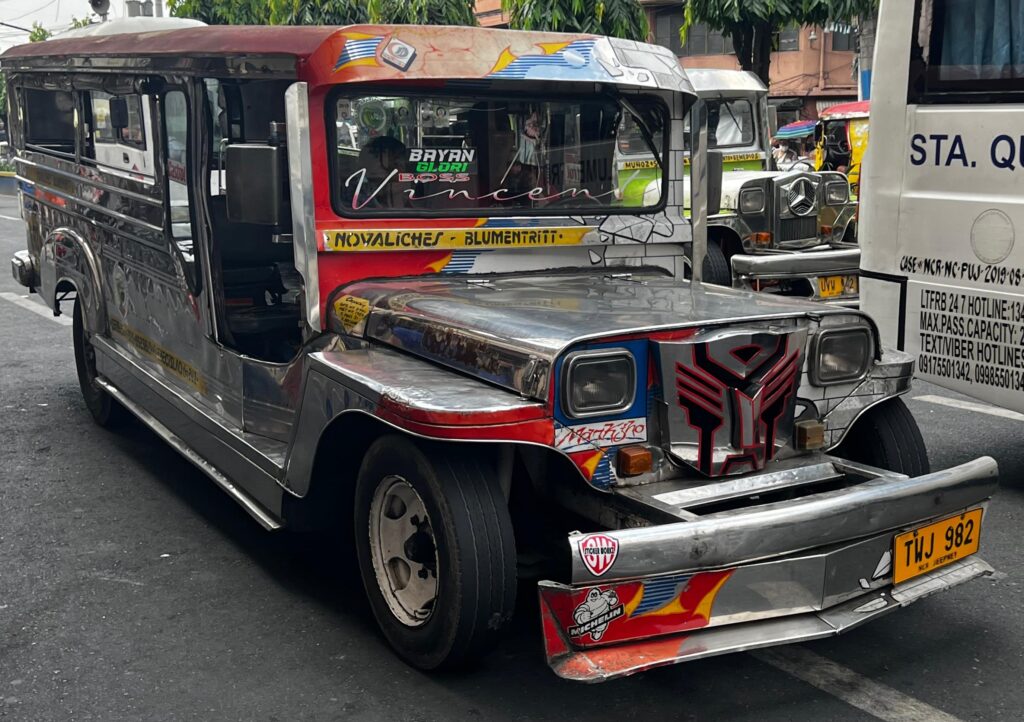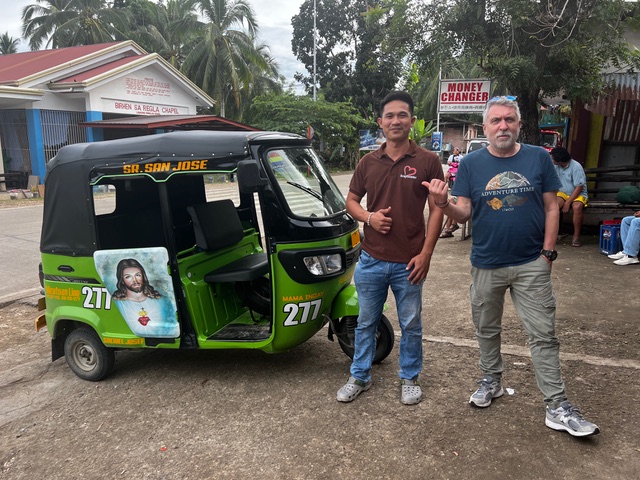by Elke Pickert, Austro-Philippine Society, June 2025
My husband and I recently spent a three-week holiday in the Philippines.
Our trip was full of little adventures – especially with the typical local transportation: the colourful jeepneys and the nimble tricycles.
What made this experience very special for me was that Ferdinand Blumentritt was my great-great-grandfather. There is an existing Blumentritt Avenue in Manila and even a train station named after him in honour of his commitment to the Philippines. These I knew before embarking to the Far East. So when I saw that the jeepneys also had this destination written on them, it was more than just a nice detail for me. I was enthusiastic to take one of these brightly painted vehicles to the exact „Blumentritt“ spot.

When we finally jolted through the streets of Manila in an old, rickety jeepney with “Blumentritt” emblazoned in large letters on the front, it felt almost surreal — touching and a little proud at the same time.

So in Manila, we got into a jeepney heading for Blumentritt Avenue. The atmosphere was warm from the moment we got on – the people were friendly and everyone got along easily. The paying method is a novel experience for us Europeans: the fare is passed from passenger to passenger until it reaches the driver at the front – and the change is passed back the same way. At some point, we weren’t just simple passengers, but also money passers for others. It was a bit of an adventure, but never unpleasant. For safety reasons, other passengers advised us to carry our backpacks at the front. However, my husband and I never felt unsafe.
Now that I am back in Austria, I often think about it. And every time I get into one of our jeeps on the Wachau Safari, I have to smile. I wonder, how much more exotic would it be to use a Philippine jeepney on our Wachau Safari!

However, the Austrian traffic authorities would not allow that. Perhaps we could try mounting an original “Blumentritt” sign on our jeep as a start. It would be a subtle but meaningful link between the past, of distant foreign adventures, and the experiences we have with our passenger guests. This would close a small, personal circle – from the jeepney in Manila to the safari jeep in Wachau, Lower Austria.
The tricycles were our favourite mode of transportation particularly on the islands of Bohol, Cebu, and Coron. These small, three-wheeled motorcycles with sidecars take you almost anywhere – at a minimum amount of money. Whether from the airport to our accommodation or on short sightseeing tours, we often rode a tricycle. Without exception, the drivers were all friendly, helpful, and most often real “tour guides” who told us a lot about the country and its people along the way.

We particularly remember one experience in Coron, Palawan. We wanted to go out for a leisurely dinner and hailed a tricycle. The driver was in a good mood as we got in. But shortly after we set off, we came to a hill – and the tricycle stalled. The engine had died. Calmly, the driver turned around, let the vehicle roll back and stopped. Then, he requested us to get out of the motionless vehicle. He went to the side, slightly lifted the tricycle – and started shaking it vigorously!
I asked him in amazement, “Why are you doing that?”
His answer, with a broad grin, “Philippine technique!”
He had actually “shaken” the last drop of fuel out of the tank. And lo and behold – it worked! We made it up the hill and reached the next gas station. This improvisation made a lasting impression on us – typical Filipinos – pragmatic, humorous, and solve hindrances with a smile.

This way of travelling was not only cheap for us but above all an authentic experience. Being on the road with the locals, hearing their stories, and closely experiencing their daily lives was one of the most wonderful experiences of this trip.
Translation from German by Letisma Stockinger
